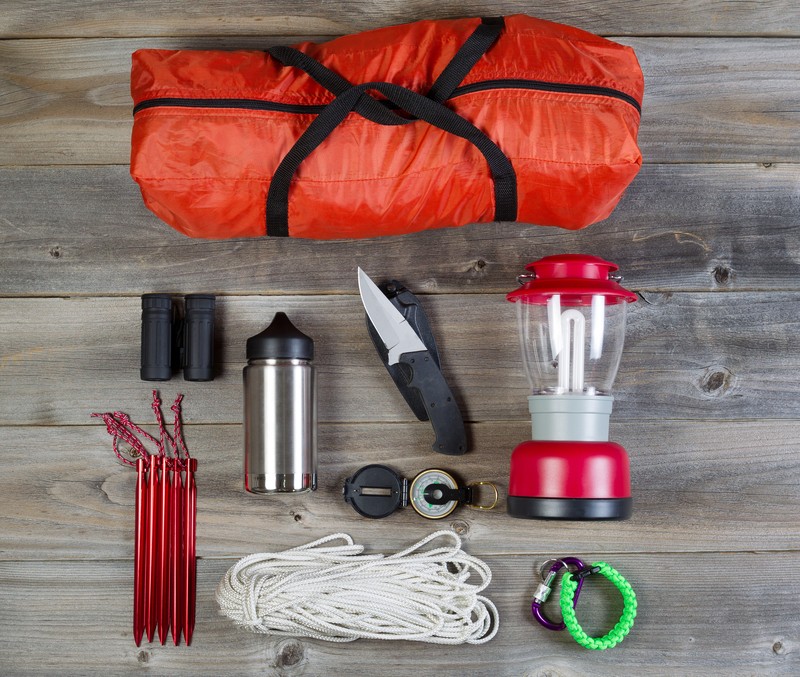While the chances of a total collapse of government or society is unlikely, it always pays to be prepared. With that in mind, it makes sense to have a bug-out bag ready for your use in your home and vehicle.
The purpose of a bug-out bag is to give yourself a bit of an edge and a head start in the event you have to leave an area quickly.
You can have more than one A-bag and it is advisable, depending on the manner in which you live, your geographical area, and your needs. One can be kept in your vehicle. One should be kept in each vehicle. That is a good minimum standard for you to follow, the more the merrier, as it fits your needs and budget. Do you have an office, a work-locker, and a spot under a counter or in a corner that you can use?
Throw a second one there; the more the merrier.
The reason that you want these “second” A-bags for your work/occupation is that you shouldn’t be dragging them back and forth from the vehicles all the time where others can see. If you have a work locker that can be padlocked, then by all means, stash a bag within it. Each bag should be (by your preference, assessment, and capabilities) between 10-20 lbs: not too heavy, yet with enough basics to pull you through an initial event when the SHTF. For those who cannot tote one of these on their backs for physical reasons, I highly recommend one of those little travel dollies for luggage. They are compact and fold up to stash right next to the A-bag.
All of your bags should be standardized if they’re in multiples (such as one in your wife’s car, one in her office, one in your blazer, and one in your employee locker). By standardized, I mean they should be all the same, exact type of carry bag, a small backpack is preferable. The reason is because each bag should hold a diagram and a list of contents by location; anyone should be able to read the diagram and find the equipment as listed upon it. The diagram included should be of the backpack with the compartments clearly drawn on it. All pouches and compartments of the backpack are assigned an identifier (letter, number, etc.), and each compartment has a list of contents.
By standardizing your A-bags, it takes the guesswork away from you and your family about what things are where. The diagram with list is the refresher to that and can be used for others if necessary. Case in point: you and your family know what is in the middle compartment, but what about Cousin Richard who is visiting from Alaska? Cousin Richard is downtown with you, an EMP goes off, and you have a head-on collision with a bus. You tell Cousin Richard about the A-bag in your trunk and then pass out. Richard can then find the diagram and use what is in the bag to help you, or to help him if (God forbid) you buy the farm.
The point is that a trusted but non-immediate family member or a friend will be able to use the bag and its supplies without dumping it all over the place to “explore” for supplies. Everything should be noted on the list and the list should be updated every 6 months or so as you PMCS (preventative maintenance checks and services) your supplies and foodstuffs for accountability and serviceability. I’m going to list for you the contents of my bag and the reasons included/function of the object (if not self-explanatory).
Note: an asterisk (*) denotes an object to be in a Ziploc or plastic bag; more than one asterisk denotes multiple bags being used.JJ’s A-bag – Contents
(1) 2 ½ oz can sterno in (1) plastic bag
Cooking, heating/boiling waterFirst Aid: *
(1) Celox kit (box): with 2”x2” gauze, adhesive bandages, Ibuprofen, antiseptic towelettes, and 2 packets of celox [note: this is quick-clot for wounds]
(2) (1) 6”x 6” field dressing
(3) (1) 10-hr hothands hand warmer
Heat, to warm IV bags, or to thaw water(4) (1) tube Neosporin
(5) (1) roll medical tape
(1) aluminum water bottle
If the water freezes, I can thaw it with fire(1) white kitchen garbage bag + rubber band
Ground cover or camo. – Winter(2) chemlights, blue
(1) Bic lighter *
(1) pen and (1) Carpenter’s pencil
Note: pencil is sturdy and very easily sharpened Foodstuffs: ***(3) Energy boost Vitamin C tubes
Note: 1 tube of powder, divide to 4 x RDA(1) 7 oz bag sunflower seeds
(4) honey and sesame candies
(6) 2 oz beefsteak beef jerky
(7) multivitamins
(1) 4 oz bag pretzels
It's possible you'll never never need to use your bug-out bag(s,) but being a survivalist is all about being prepared for the unknown.
With the way things have been going, a weather event, civil unrest or even some form of man made disaster can put you in a position where essential food sources, communications, and even transportation means are greatly hampered or even rendered inoperable.
Having a bag with emergency first aid, food and other items just makes sense, even if you are not prone to think you will ever need it.
To review the complete list of items you should include in your bug-out bag, please visit SHTF Plan.

@[1014717685:2048:Elias Ramos Jr]
@[671024141:2048:Ryan Salmeri]
New to me. We didn’t have any of $#%&!@*!
Who puts vitamins in a bug out bag
Ppl who take vitamins daily I would guess. I do.